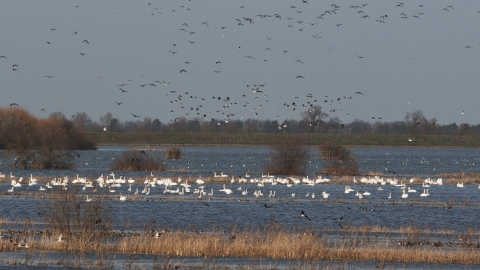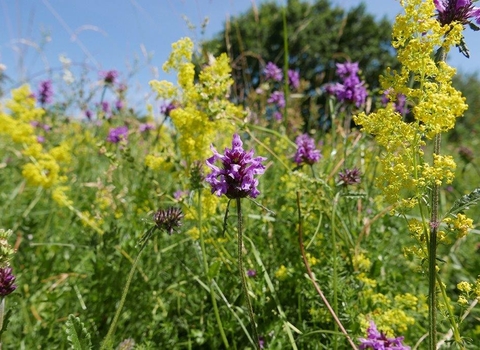
Wildfowl at Ouse Washes NR - Bob Parker
Ouse Washes
Location
Know before you go
Dogs
When to visit
Opening times
Open at all timesBest time to visit
Winter for over-wintering birdsAbout the reserve
The parallel rivers, ditches and banks of the Ouse Washes form a distinctive feature in this otherwise flat landscape. The washlands were created 360 years ago to retain winter flood water from the Ouse and prevent it from flooding the valuable surrounding farmland, and it still performs this function today.
Over the years the Washes have also provided high quality summer grazing for cattle and sheep and have developed into an internationally important wildlife site. In the winter when the water levels are high, the banks are covered with flocks of wigeon grazing the turf, while dabbling ducks patrol the waters searching for floating seed and buried roots. Large flocks of geese, including bean and white-fronted, and whooper and Bewick's swans use the reserve as their base for foraging among the fields.
Spring and summer also offer plenty of wildlife. Garganey, avocet, black-tailed godwit, redshank, snipe and yellow wagtail all breed on site, and to catch a glimpse of lekking ruff is a treat. New species arrive each year; little egret, spotted crake and crane are recent residents.
Around the visitor centre, autumn brings flocks of farmland birds including tree sparrow, corn bunting and yellowhammer. Kingfishers swoop up and down the river. In addition to birds, the Ouse Washes are good for insects and plants. Dragonflies and damselflies hunt over the rivers and ditches in summer, including rare species like the scarce chaser. More than 300 kinds of plant have been recorded, including fringed water lily and flowering rush.
There are hides for birdwatching along the embankments. The site is managed to provide the best conditions for migrating and overwintering birds.
Additional information
- Scroll down to see the reserve boundary. Please note the boundary map is for indication purposes only and does not show the Wildlife Trusts definitive land boundary.
FOR ANY MEDIA ENQUIRIES PLEASE CONTACT OUR COMMUNICATIONS TEAM: communicationsteam@wildlifebcn.org or 01954 713500 and ask for comms team.

